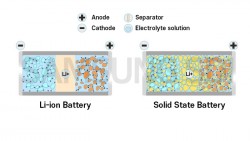Jeep Tail Light Wiring Diagram: A Guide to Wiring Your Jeep's Tail Lights
A Jeep tail light wiring diagram is a graphical representation of the electrical connections required to power the tail lights on a Jeep. It is an essential tool for any Jeep owner or mechanic. Who needs to troubleshoot or repair the tail lights on their vehicle? In this article, we will provide a comprehensive overview of the Jeep tail light wiring diagram. Including the components involved, the wiring configuration, and the different types of tail lights used in Jeeps.
The Jeep tail light wiring diagram is also a schematic representation of the electrical connections. This diagram illustrates the wiring configuration of the tail light circuit. which includes brake lights, turn signals, and reverse lights. The wiring diagram usually consists of several components. Including wires, connectors, and switches. Which are labeled with specific colors, symbols, and numbers to state their functions and positions in the circuit.
The diagram helps technicians. Also, DIY enthusiasts to troubleshoot and repair any issues related to the Jeep tail light system. By following the wiring diagram, they can identify and fix problems. Such as broken wires, faulty switches, or blown fuses. It ensures the proper functioning of the tail lights for safety and compliance with traffic regulations.
Components Involved
The components involved in a typical Jeep tail light wiring diagram include:
Battery: The source of electrical power for the tail lights.
Fuse: A safety device that protects the electrical system from overload by breaking the circuit if too much current flows through it.
Switch: A device that opens and closes the circuit to turn the tail lights on and off.
Relay: An operated switch that uses an electromagnet to mechanically switch the circuit on and off.
Tail light assembly: The physical housing that contains the tail light bulbs and reflectors.
Wiring harness: A collection of wires. Which carry electrical power and signals between the battery, switch, relay, and tail light assemblies.
Ground connection: A wire that provides a path for electrical current to flow back to the battery's negative terminal, completing the circuit.
Omit, the wiring diagram of a Jeep tail light is simple, consisting of these basic components working together to power and control the lighting system.
.jpg)
Wiring Configuration
The wiring configuration for a Jeep tail light system consists of three wires. These are the ground wire, the power wire, and the brake wire. The ground wire is usually black. Which provides the electrical connection to the vehicle's chassis. The power wire is usually red or brown. And provides the electrical connection to the vehicle's battery. The brake wire is usually green or yellow. Which provides the electrical connection to the brake light switch.
In some Jeep models, there may be extra wires for reverse lights, turn signals, and parking lights. The reverse lights are activated when the vehicle is shifted into reverse gear and the turn signals are. Parking lights are activated when the driver signals a turn or turns on the vehicle's parking lights.
Types of Tail Lights Used in Jeeps
There are several types of tail lights used in Jeeps. Including LED, incandescent, and halogen. LED tail lights are becoming popular due to their energy efficiency and longer lifespan. They also provide brighter illumination. These are less likely to fail than traditional incandescent or halogen bulbs.
Incandescent tail lights use a filament that heats up and glows when an electrical current is passed through it. They are less energy-efficient than LED lights. It has a shorter lifespan. But, they are less expensive than LED lights and are still used in older Jeep models.
Halogen tail lights use halogen gas to increase the efficiency of the filament. They are more energy-efficient than incandescent lights. But still have a shorter lifespan than LED lights. These lights are also much more expensive than incandescent lights. But less expensive than LED lights.

Troubleshooting Jeep Tail Light Wiring
Troubleshooting Jeep tail light wiring can be a complex task. but with a few simple steps, you can diagnose and fix the problem. You can follow the following steps:
Check the Bulbs: The first thing you should do is check the tail light bulbs to make sure they are not burnt out. If one or both bulbs are not working, replace them with new ones.
Check the Fuse: Check the fuse box to see if the fuse for the tail lights is blown. If the fuse for the tail lights is blown, replace the fuse with a new one of the same amperage.
Check the Wiring: Check the wiring to make sure there are no breaks or cuts in the wires. If find any damage, repair the wiring.
Check the Ground: Check the ground wire to make sure it is connected to the frame. If it is loose or corroded, clean the connection and tighten it.
Check the Switch: Check the switch that controls the tail lights to make sure it is working. If not working, replace the switch.
Check the Relay: Check the relay that controls the tail lights to make sure it is working. If it is not, replace the relay. By following these steps, you should be able to diagnose and fix most issues with Jeep tail light wiring. But, if the problem persists, it may be best to seek the help of a qualified mechanic.
Conclusion
The Jeep tail light wiring diagram is an important component of the electrical system of a Jeep vehicle. It provides a visual representation of the wiring connections for the tail lights. It allows for easy identification of wires and their respective functions.
The wiring diagram is particularly useful for troubleshooting any issues with the tail lights. Such as a broken or damaged wire, a blown fuse, or a faulty switch. With the help of the diagram, mechanics or DIY enthusiasts can locate the source of the problem and make the necessary repairs. It ensures that all connections are made to prevent any further issues with the tail lights. Maintenance and inspection of the wiring system can help prevent problems if done.



